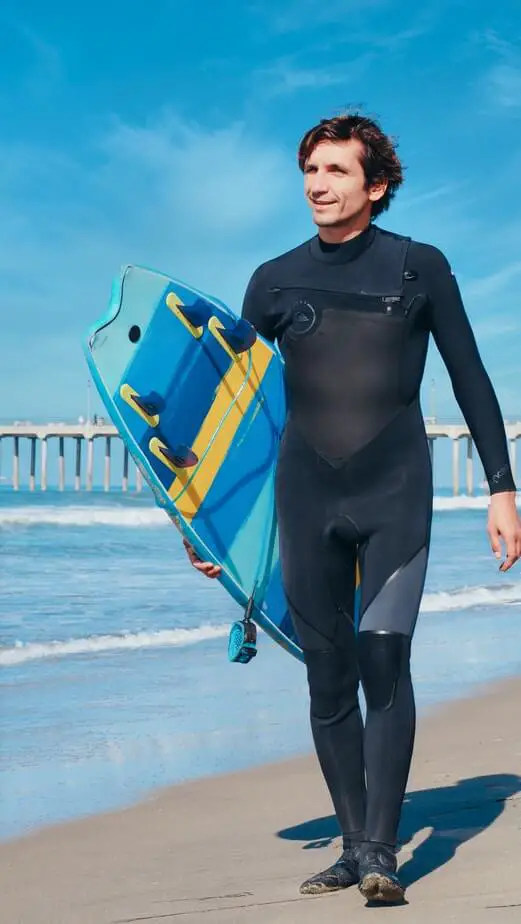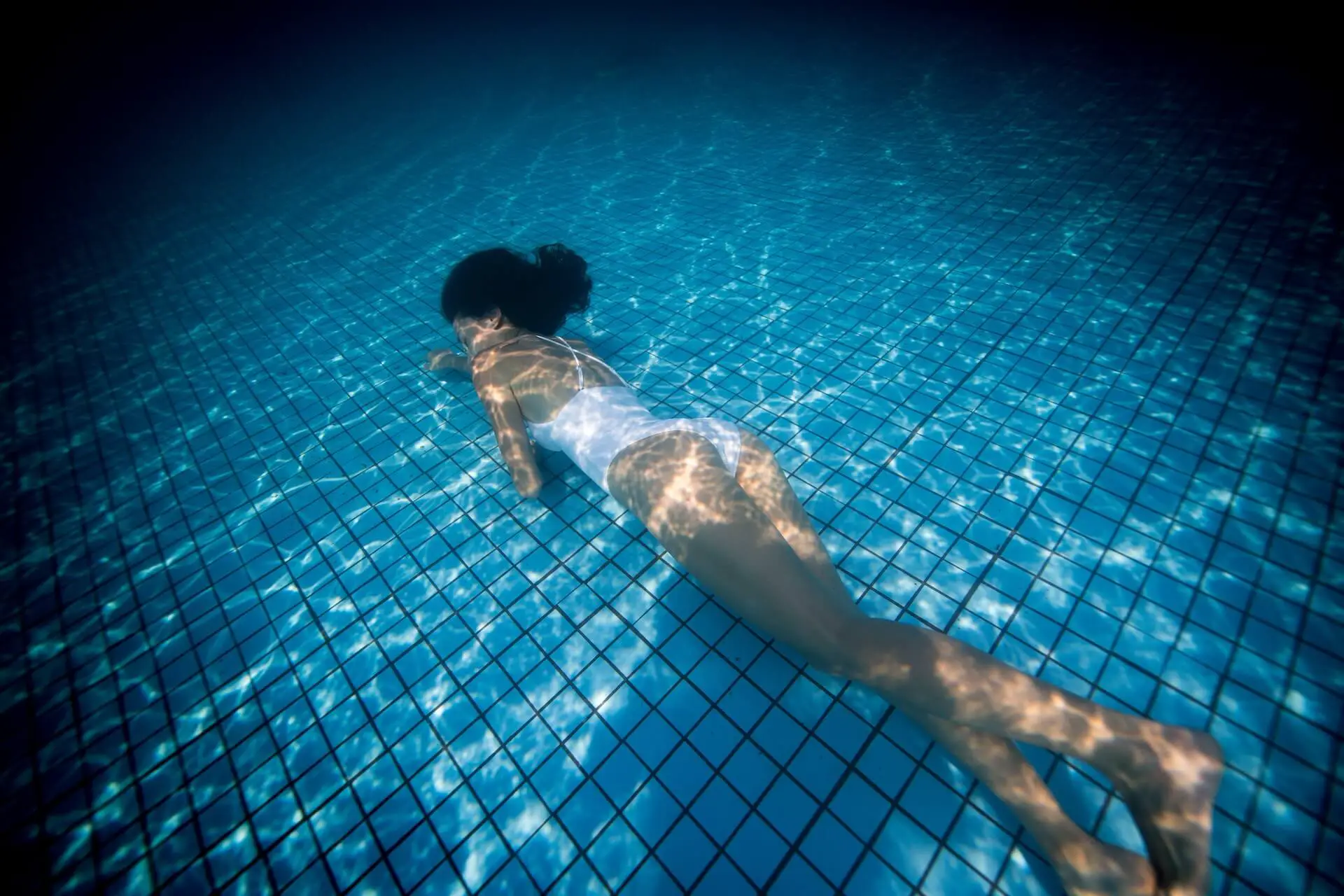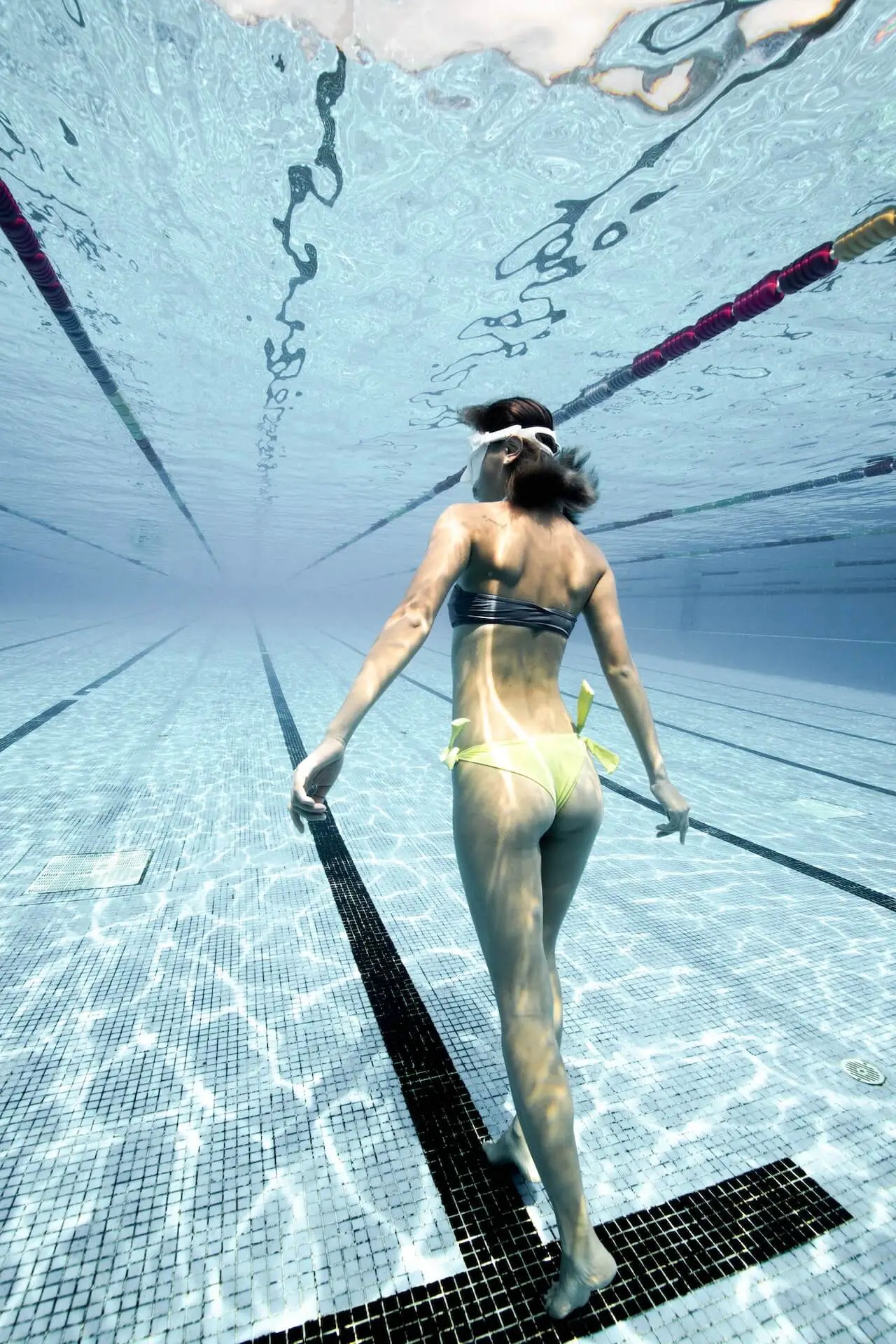When it comes to water sports and activities, staying warm is essential to your comfort and safety. You might be wondering if wetsuits can keep you warm both in and out of the water.
A wetsuit’s effectiveness at keeping you warm diminishes when you’re out of the water. It is designed to trap heat, not protect against the cold. Thus, if your wetsuit is wet and gets exposed to the wind, the evaporative cooling can cause you to feel cold. On a warm day, a wetsuit will likely cause you to overheat instead.

In this article, we’ll explain how wetsuits work as well as provide some tips on how to maximize their insulating properties so that you can stay warm out of the water.
How Does a Wetsuit Work?
Before we discuss how a wetsuit can keep you warm out of the water, it helps to have a little context about how it can keep you warm in the water, and how its benefits translate to land-based activities.
Wetsuits are typically made from a material called neoprene, which is a type of synthetic rubber. Neoprene is great for wetsuits because it contains tiny trapped air bubbles, giving the material excellent insulation properties and also extra buoyancy. These air bubbles help maintain your body heat, keeping you warm even when submerged in cold water.
When you’re in the water, your wetsuit works by trapping a thin layer of water between the neoprene and your skin. Your body naturally heats up this layer of water, creating a warm, insulating barrier between you and the chilly water outside. This mechanism is the key to helping you stay warm and comfortable while you’re enjoying your favorite water activities.
When you’re out of the water, the wetsuit continues to provide insulation by trapping your body heat within the neoprene material. Due to the trapped air bubbles, the wetsuit acts as a barrier that prevents your body heat from escaping. This helps you stay warm even when you’re not in the water.
However, keep in mind that wetsuits do have limitations, and while they do a great job of providing insulation in the water, they might not be as effective when you’re entirely out of the water and exposed to cold winds or air temperatures.
To ensure you stay warm both in and out of the water, consider adding extra layers of clothing or investing in a high-quality wetsuit with additional features designed for better heat retention.
Wetsuits and Temperature Regulation
Wetsuits in the Water
When you’re in the water, a wetsuit is designed to keep you warm by trapping a thin layer of water between the suit and your skin. The thickness of your wetsuit plays a significant role in how warm it can keep you.
Generally, the thicker the wetsuit, the more insulation it provides, making it suitable for colder water temperatures. Make sure you choose the right wetsuit thickness based on the water temperatures you’ll be in, as well as other factors like air temperature, wind conditions, and your sensitivity to cold.
A good wetsuit fit is crucial for optimal temperature regulation. When a wetsuit fits properly (snug), it allows that thin layer of water to remain trapped and heated by your body, ensuring you stay warm while in the water. But if the fit is too loose or too tight, the water can easily flush out, leaving you to experience the cold more intensely.
Wetsuits Out of the Water
When it comes to wearing a wetsuit out of the water, they’re not quite as effective at keeping you warm. In fact, wetsuits aren’t really designed to keep you warm out of the water. Unlike other forms of insulation, a wetsuit relies on the water trapped inside to provide its warmth.
While out of the water, the wetsuit is still providing some protection from the wind and cold air, but the lack of water reduces the amount of insulation it can provide.
If you happen to get your wetsuit wet on the outside, then the evaporative cooling effect can cause you to feel cold, especially if there is a cool breeze. That said, this is true for literally any other clothing, and in that regard, wetsuits are actually better than most at keeping you warm out of the water.
Furthermore, wetsuits are not very breathable and this can cause you to sweat a lot inside, creating a sticky feeling that may feel uncomfortable.
All in all, know that wetsuits are designed to keep you comfortable and warm while swimming or participating in water-based activities and not for extended periods out of the water.
Practical Applications of Wetsuits Out of Water
Use in Sports
Wetsuits are widely used by surfers, swimmers, and other water sports enthusiasts. While wetsuits are primarily used in water, certain land-based sports such as triathlons also require wearing wetsuits as part of the competition.
When engaging in these activities, it’s important to wear a wetsuit that fits well and is specifically made for that activity, e.g. a triathlon wetsuit for triathlons. This is because the thickness of the wetsuit will differ based on where you need more mobility for the activity, and the zipper location and other features may also differ slightly.
Extreme Weather Conditions
Wetsuits can be an essential piece of clothing for those who participate in water sports in cold weather conditions.
When facing colder temperatures and the risk of hypothermia, a wetsuit might be the difference between a fun day out or a dangerous situation. Keep in mind that while wetsuits offer invaluable insulation in the water, they do not provide the same level of warmth and protection outside of it.
In extreme weather, it’s crucial to layer up and wear appropriate waterproof clothing to stay warm and dry. Wetsuits should be used in conjunction with other cold-weather gear to maintain your comfort and safety both in and out of the water.
Overheating Risks
While wearing a wetsuit can definitely help you stay warm in the water, be aware of the potential risks of overheating when you’re out of the water.
Though we provided many warnings about how wetsuits are not as effective out of the water, unless you are wearing them during extreme cold weather conditions, wetsuits are more likely to cause you to overheat than fail to provide enough insulation.
Wetsuits are designed to trap heat between the neoprene material and your skin. Though it is designed to do this underwater, it can insulate your body heat on land, making it very easy for you to warm up too quickly.
To avoid this, you can unzip your wetsuit as needed, or even completely take off the top section and let it hang off your waist on a warm day.
Wetsuit Layering Options and Additional Gear
Depending on the water temperature and your activity, you might need more than just a wetsuit to stay warm. Accessories like gloves, booties, and socks can help protect your extremities and further insulate you from the cold. Layering with a rash guard or thermal layer under your wetsuit can also help keep you extra warm in colder waters.
However, be mindful of your mobility and consider how layering might affect your flexibility and overall comfort. Additional gear should always complement your wetsuit and activities rather than make them more difficult.
Frequently Asked Questions
How warm will a wetsuit keep me?
A wetsuit is designed to keep you warm in cold water, but it won’t completely protect you from feeling cold or from hypothermia. The warmth depends on the thickness of the wetsuit and the water temperature. Generally, thicker wetsuits provide better insulation, but they also decrease flexibility. You can find a wetsuit water temperature guide to help you choose the right thickness.
Do you still feel cold in a wetsuit?
Yes, you can still feel cold in a wetsuit, especially if you’re in extremely cold water or if the wetsuit is not the right thickness for the conditions. While a wetsuit provides insulation, it’s not a perfect barrier against the cold. For cold water activities, consider wearing a drysuit instead.
Can a wetsuit keep you warm in winter?
Wetsuits can help you stay warmer in winter by trapping a thin layer of water between your body and the wetsuit. However, for extremely cold conditions, you’ll need a thicker wetsuit, a drysuit or additional layers like hoods, gloves, and booties to keep you warm.
Should water get in my wetsuit?
Yes, a little water should get in your wetsuit. Wetsuits don’t keep you dry. Instead, they work by trapping a thin layer of water against your skin, which is warmed by your body heat. This warm water acts as an insulating layer, protecting you from the cold surrounding water. If you want to stay dry, wear a drysuit instead.
Does neoprene keep you warm?
Neoprene, the synthetic rubber used in wetsuits, keeps you warm by providing insulation. It is a stretchy and flexible material that retains its insulating properties even in cold water. Neoprene’s air-filled cells trap heat and help maintain your body temperature while you’re in the water.
Does wearing clothes under a wetsuit keep you warmer?
Wearing thin, moisture-wicking layers under a wetsuit can provide additional insulation and help you stay warmer. However, keep in mind that wearing thick or bulky clothing may hinder your flexibility and cause your wetsuit to fit incorrectly, which can affect its insulating capabilities.
Sources:







